Prior to this winter, most of my productive work was done in the off-season of hiking between December and May. Brutally cold temperatures, precipitation of all forms, and seemingly insurmountable winter routes meant I considered most endeavours un-endeavourable. (Un)fortunately, I’ve found a new hobby/mode of transportation/vibrant community in the snowscape of the White Mountains. I’ll wrap up what I’ve been up to in the past several months.
Winter in the Whites
I quickly realized after the first few snowfalls that winter spells hibernation only for bears. Each fresh layer of powder meant more and more areas to be transformed and explored as untamed wilderness.
In revisiting some of the summits I’ve previously only seen in the summer (like Mt. Marcy) the trip is almost entirely new. In mountain regions with heavy snowfall, your perspective is quite literally shifted by 2-3 feet upwards. Those tree branches once overhead now meet you in the eyes! With summits covered in thick ice and transformed by heavy winter winds, most places are almost unrecognizable.
I’d encourage everyone to train properly and take a new look at their supposed well-known backyard in the winter.
Road and Trail Routes
Road closures are a fact of life in the winter. I followed every New Hampshire and Vermont-area ski resort for their trail condition updates and used it to piece together a rough mental map of snow coverage / road closure / weather conditions in the area. For instance, Wildcat Ski Resort is located on the leeward side of Mt. Washington. I could extrapolate these snow metrics to a wider region east of Washington, even out to Maine.
For some summits the weather was pretty easy to piece together. Waterville Valley Resort runs on the slopes of Mt. Tecumseh, so I assumed any conditions by the resort were the exact same as the conditions 30 feet to the right.
As with most trips, early departures are the name of the game. Most ski resorts opened at 9am so I could get on the road by 6am to beat the traffic upstate.
Choosing trail routes was also a bit of a challenge. I used caltopo to map elevation and tried to stick below 30 degrees for any ski ascents. Snowshoes, I got up to 50 degrees incline! Many of these summits had several trails leading up, so I had the freedom to choose different routes.
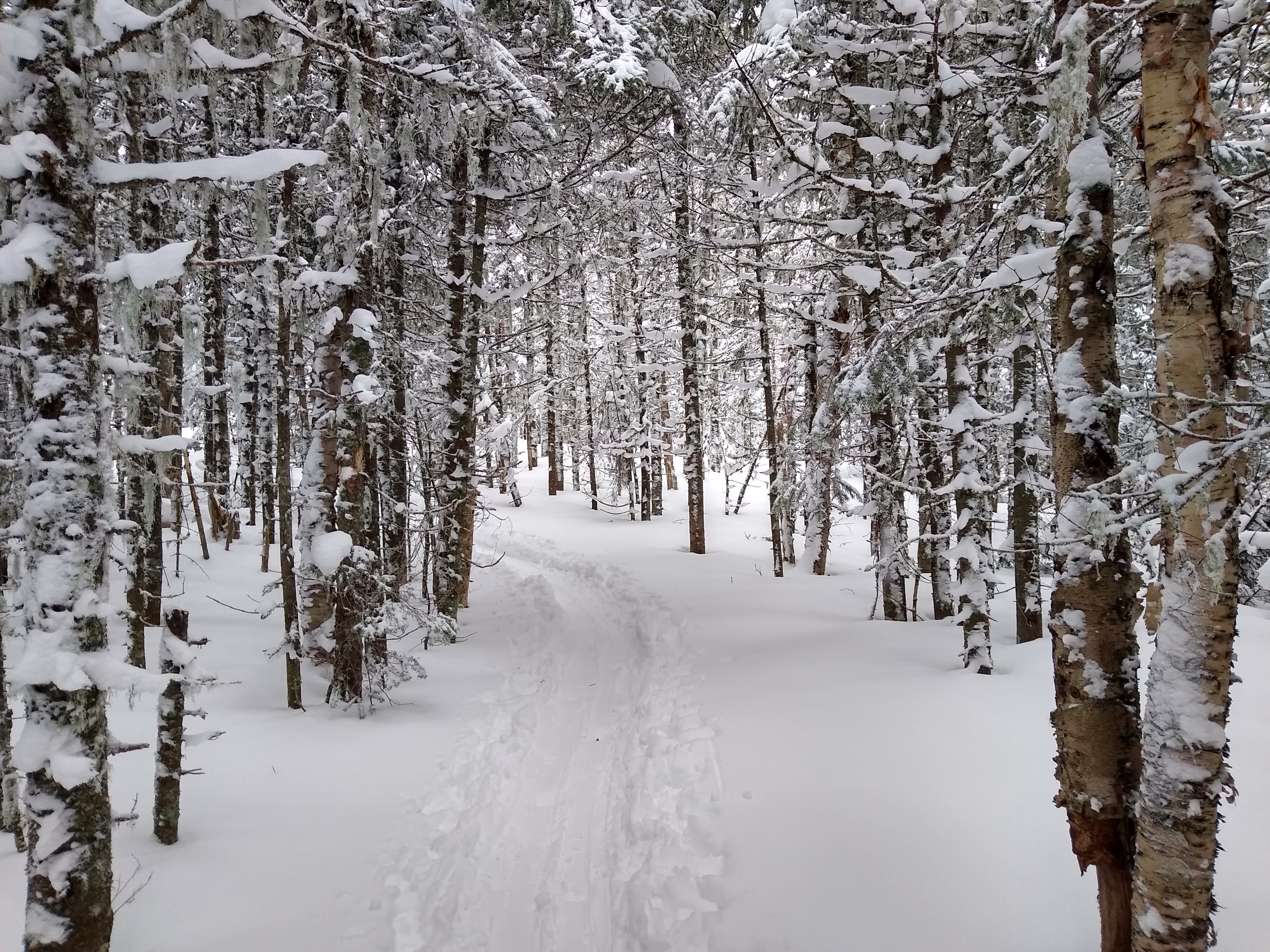
Typical snow-laden trail in the Whites
You’ll notice I did not summit Mt. Washington at all this winter. The presidentials are uniquely horrible especially in the winter. I opted to not risk any harm from weather or avalanches and will summit this mountain in fairer weather.
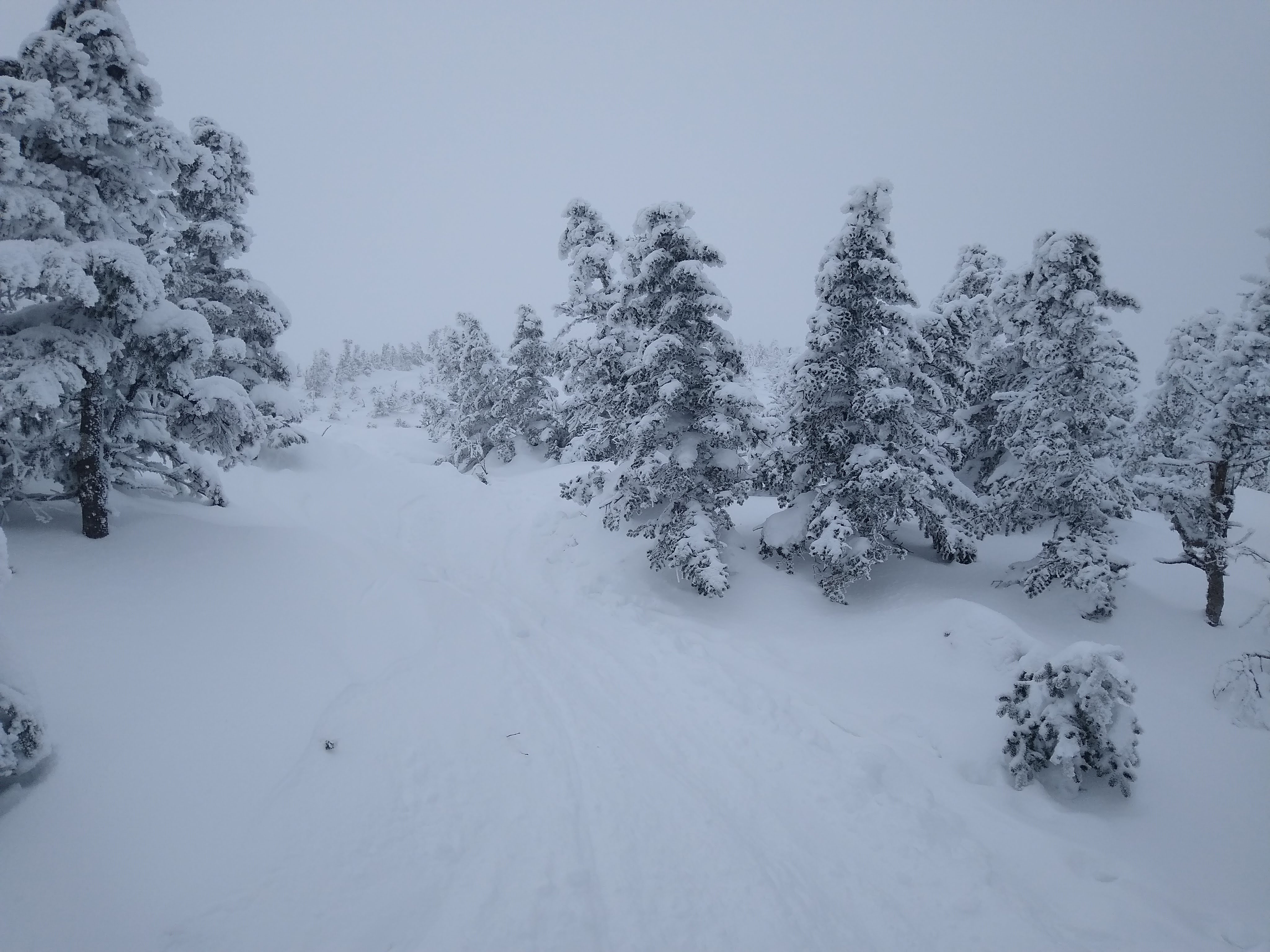
Weather
There’s no shame in being a fair-weather hiker, especially when rotten conditions can kill you and not blink twice. Fortunately the margin for “fair weather” in the Whites can be adapted quite a bit when you’re not concerned with a sweeping panoramic view. I used Mountain Forecast for every summit and was concerned primarily with windspeed. I didn’t summit with winds over 30 mph. Temperature was a slight concern, too - I tended to avoid “real-feel” temperatures below 10 degrees F.
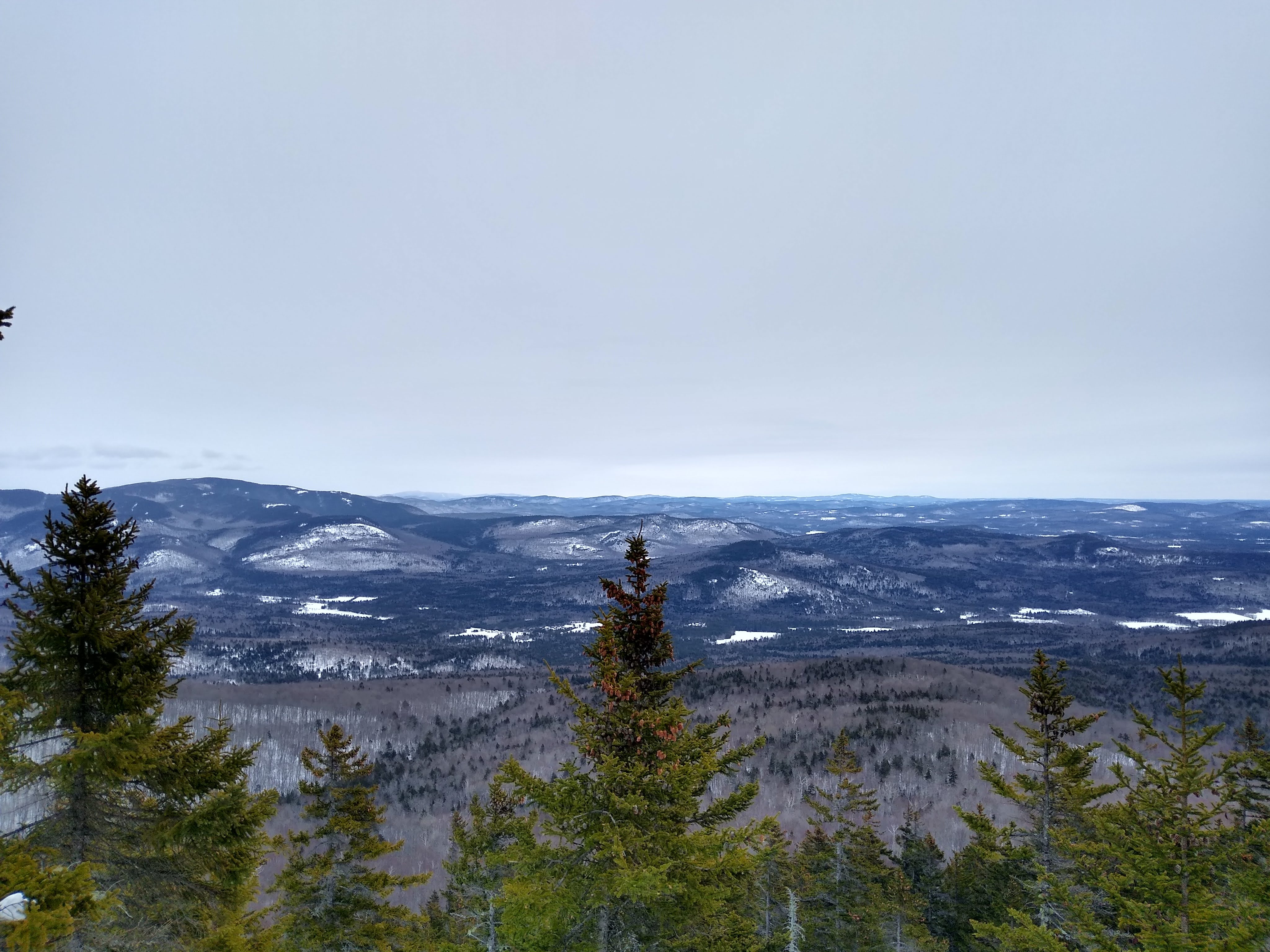
One of the better view days from Mt. Baldface
Trailmates
Another fact I was surprised by when starting my winter expeditions were the staggering amount of other hikers out on the trail with me. I was greeted on my first winter summit, Mt. Tremont, with at least 4-5 other hikers. Temps got below zero that day! I’ve met countless backcountry skiers, double that of snowshoers, a few unprepared postholers, and even a pack of fat-tire bicyclists.
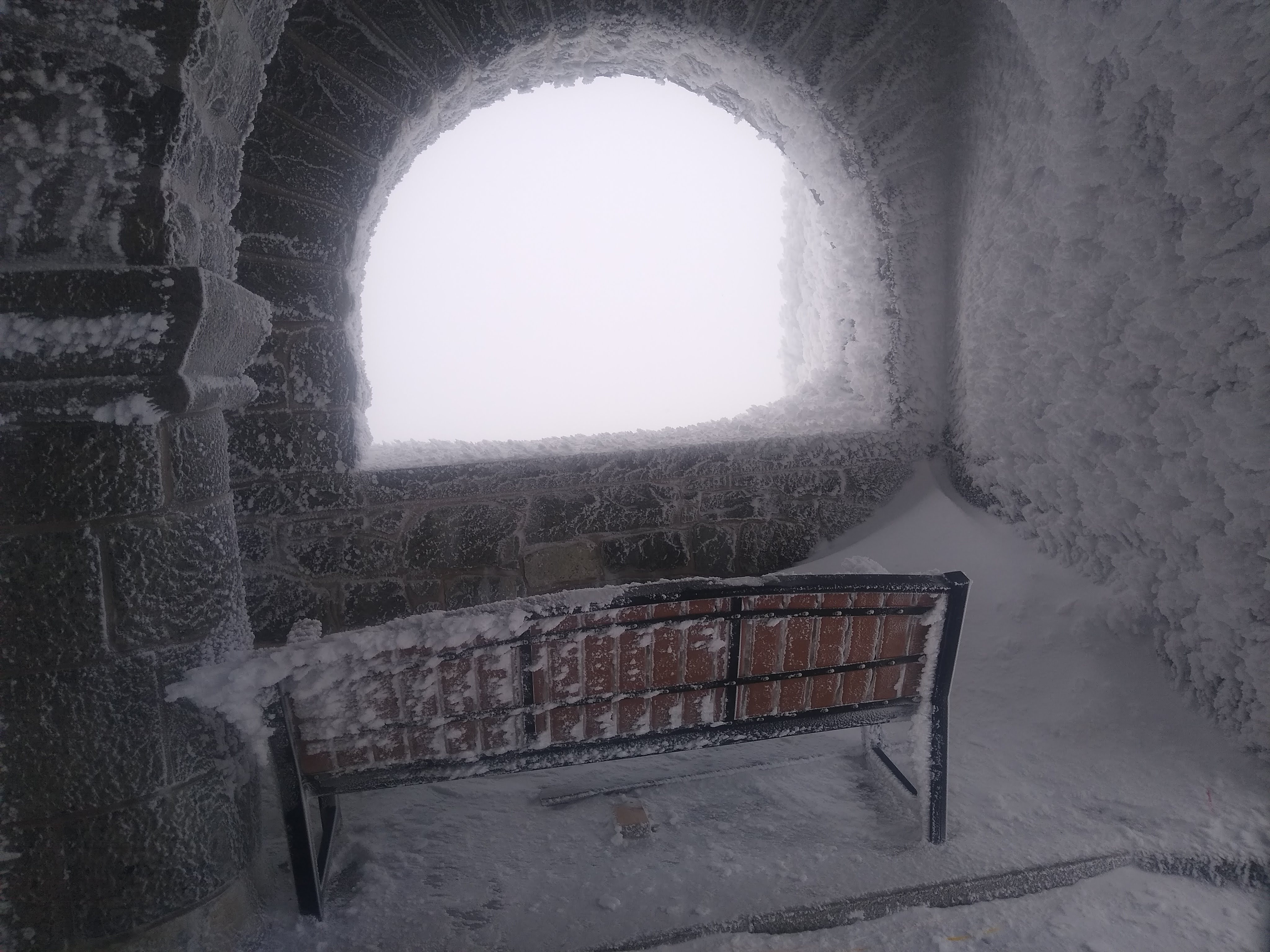 Whiteface Mountain. No one was up there that day…
Whiteface Mountain. No one was up there that day…
I would be remiss to fail to mention Marc AA1F and Mindy KM1NDY, two extraordinary individuals who joined me for Mt. Norwottock before my skiing addiction took hold.
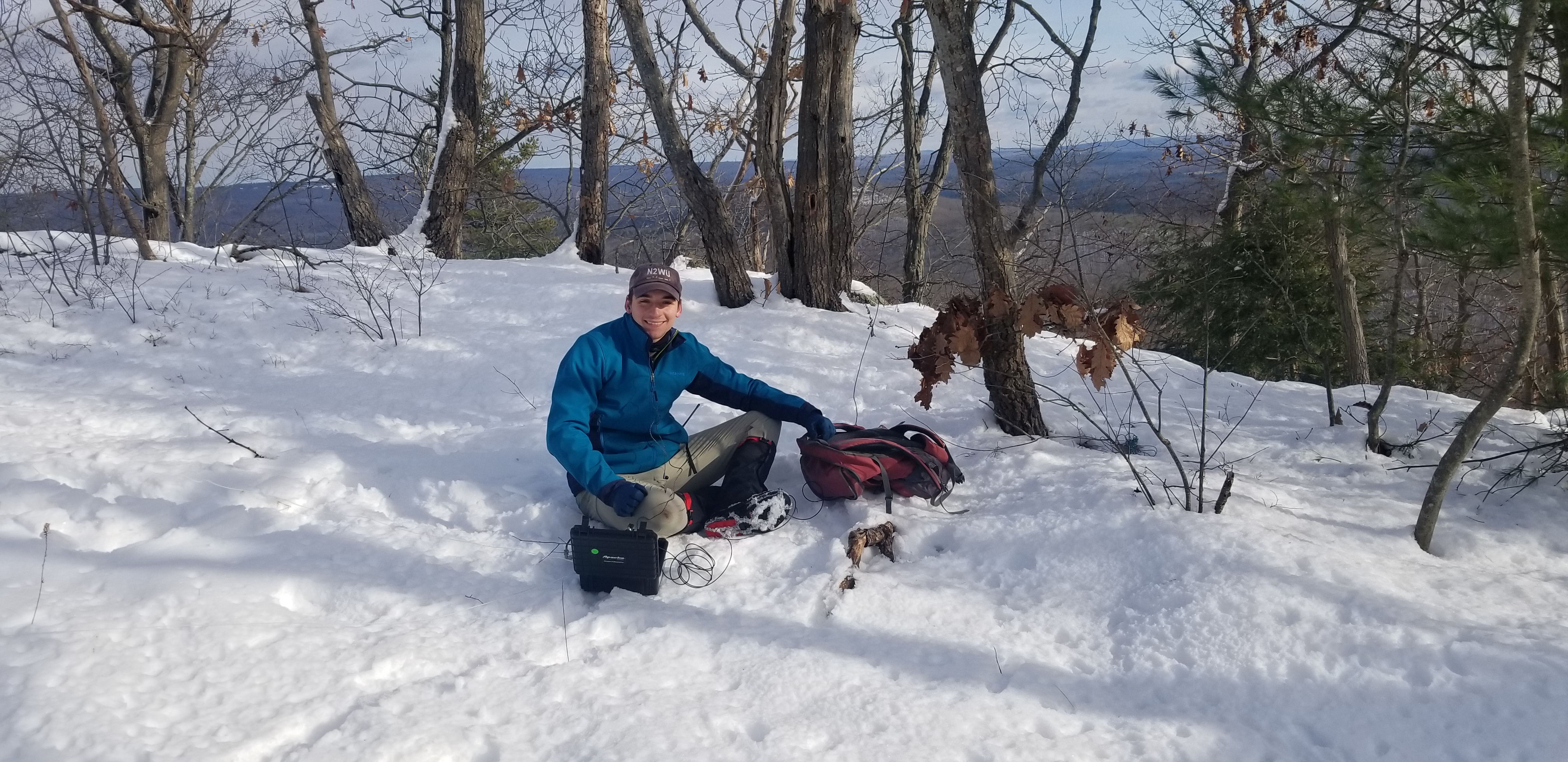
Courtesy of Marc AA1F
Tim W3QP also unexpectedly joined me on Mt. Tecumseh and took a great action shot:
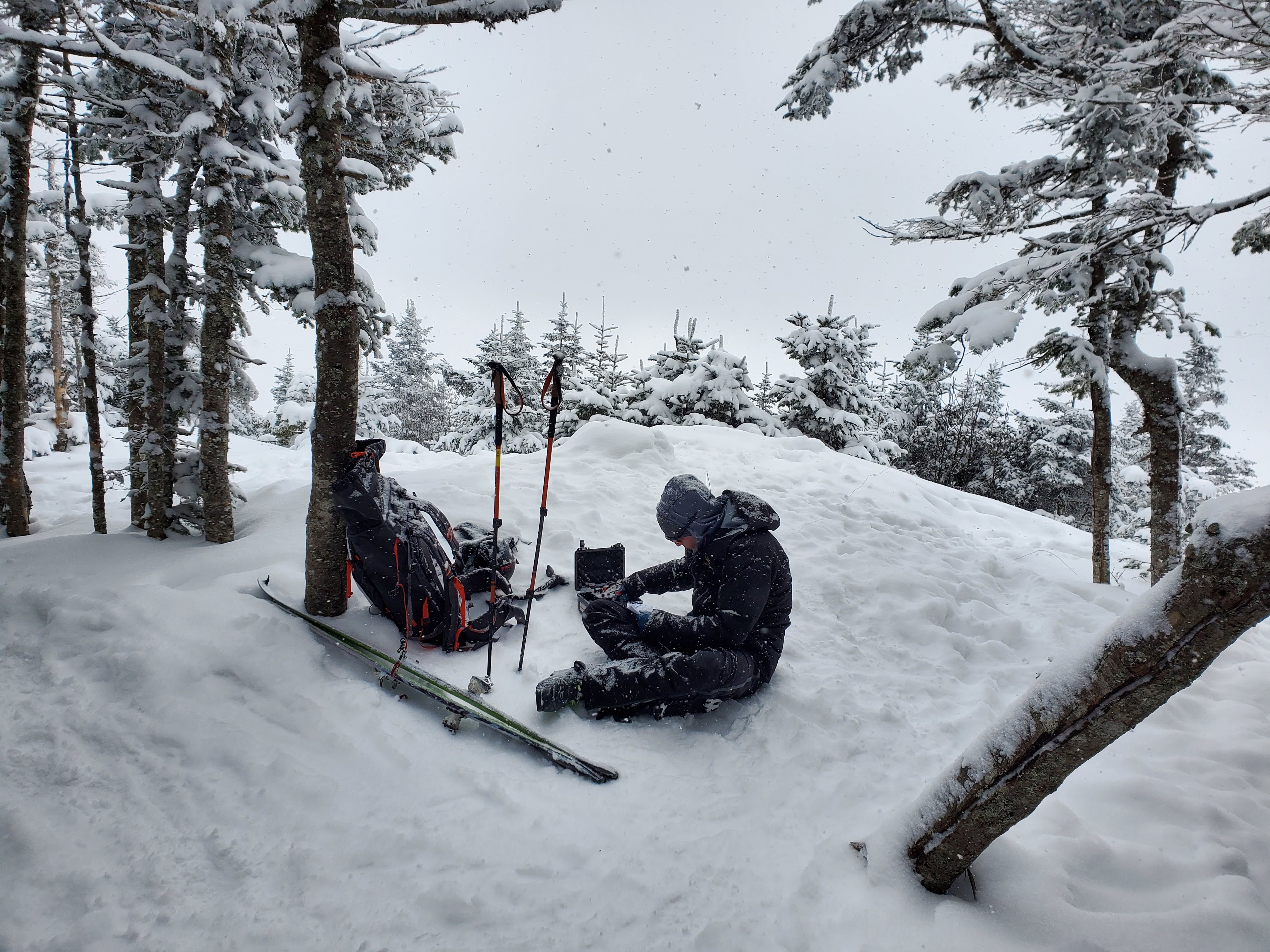
Lastly, the winter wildlife were wonderful as well. As an amateur birder, I got to see black-capped chickadee on both Mt. Tecumseh and Mt. Marcy. Maybe it was the same bird and he gets around just as much as I do. I was greeted by a fox, a lynx, and other winter creatures in the peaceful parks.

Photo Credit to the other hiker who had less-frozen hands than I
The Summits (A long list)
Here’s the exhaustive list of the summits I tackled from December 2022 -> March 2023:
- Mt. Tremont - 04 December - Hike
- Mt. Moosilauke - 28 January - Ski
- Mt. Norwottock - 29 January - Hike
- Mt. Kearsarge - 05 February - Ski
- Mt. Mansfield - 10 February - Ski
- Mt. Tecumseh - 26 February - Ski
- Whiteface Mountain - 04 March - Ski
- Mt. Marcy - 05 March - Ski
- North Baldface - 07 March - Ski
- Mt. Cardigan - 11 March - Ski
- Cannon Mountain - 14 March - Snowshoe
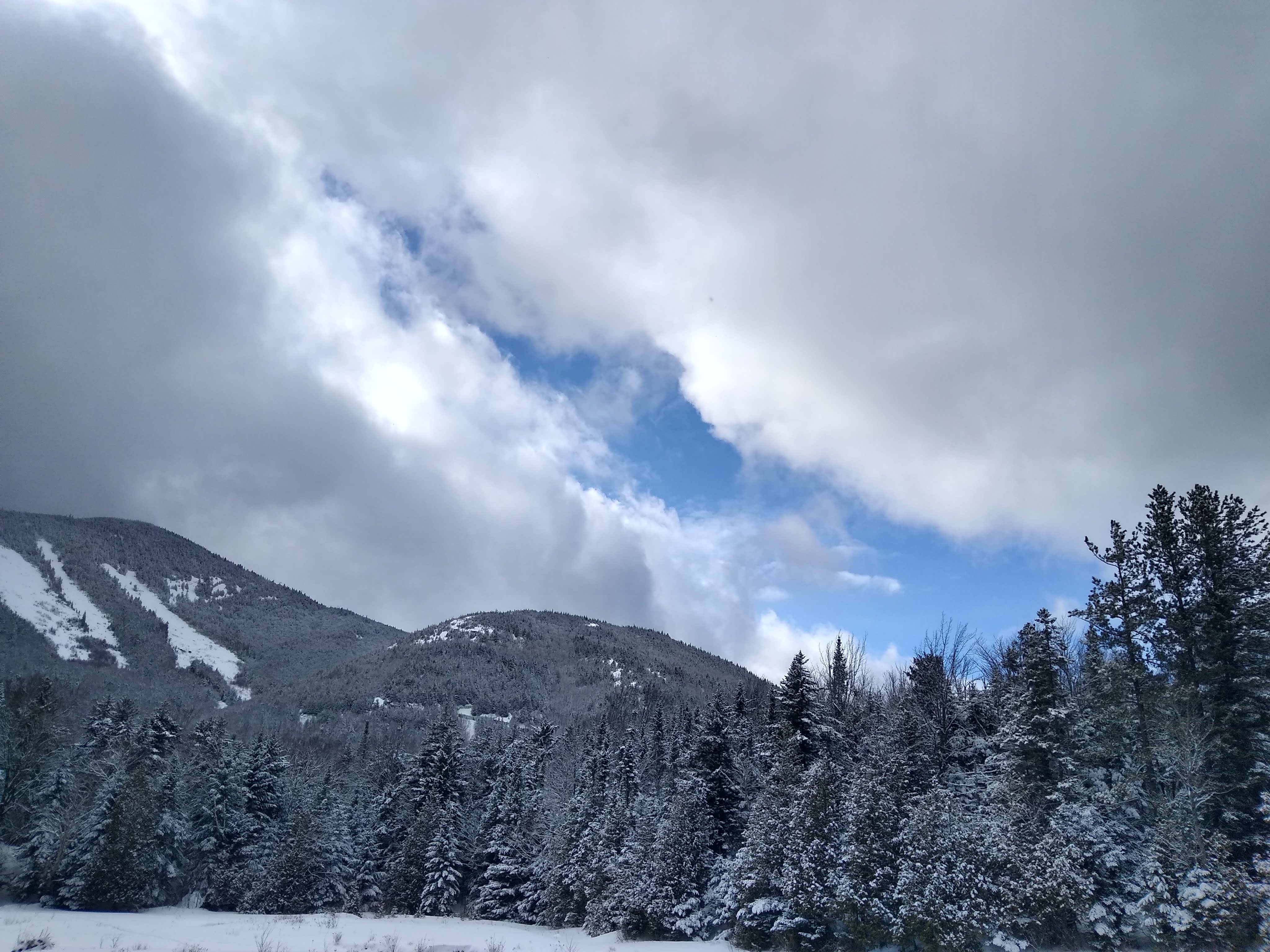
Tips and Mountaineering Tricks
I’ve rethunk most everything about winter hiking and had much better success than my attempts in winter 2022. Here’s a condensed version of what I learned.
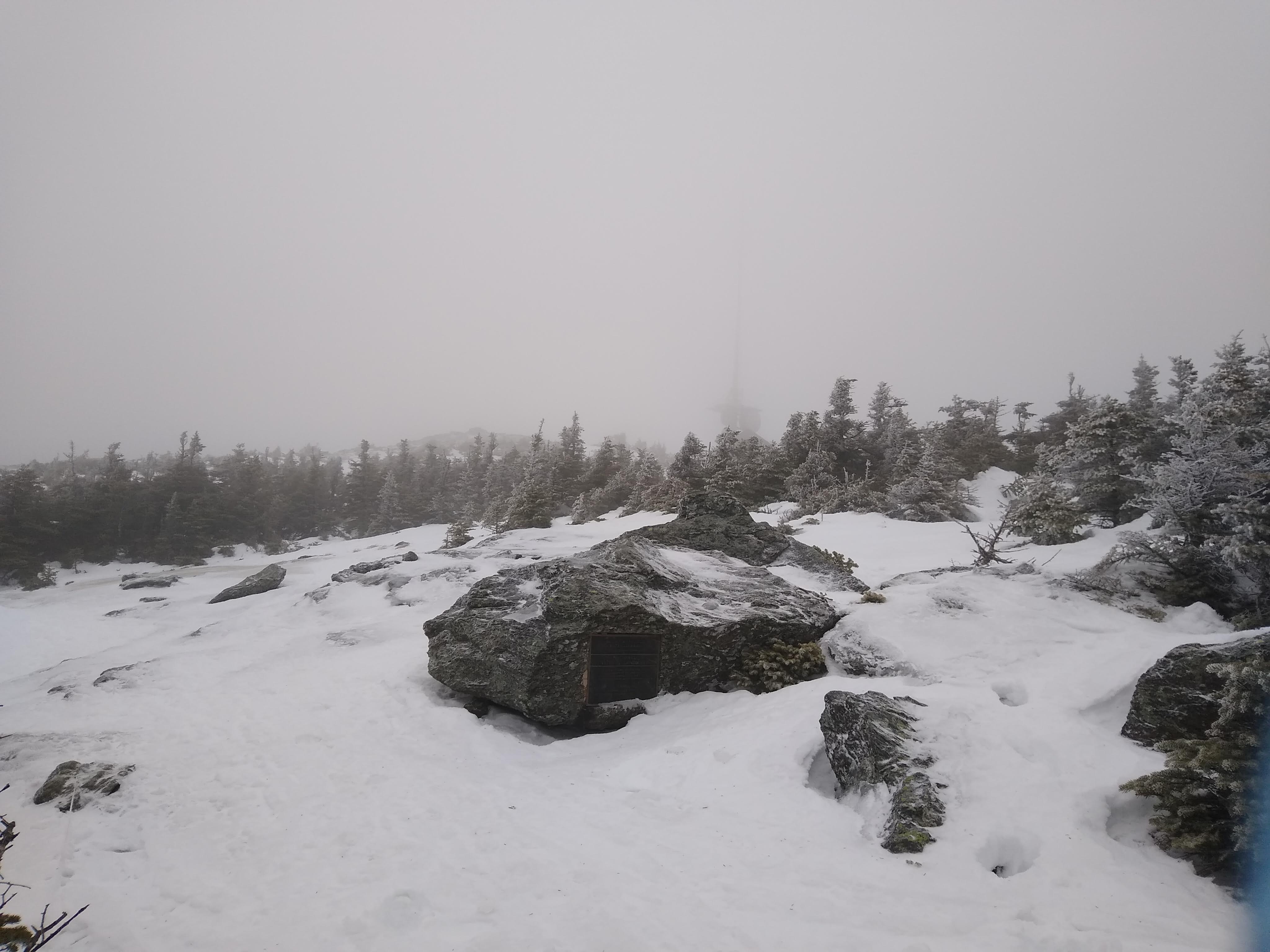
Clothing
The entire challenge of winter hiking is layering. Once temperatures get low enough, another 5 degrees below zero really won’t make a difference. The biggest piece of advice I can give is to start with as little clothing as possible in the hike. If you think you don’t need to wear something, store it in your bag. Otherwise you will sweat through that clothing almost immediately.
Every ski trip, ranging from base temps of 10-30 degrees, started with:
- Smartwool baselayer top and bottom
- Glove liners
- Buff/bandana
- Gore-tex bibs
And that’s it. I started each of these hikes with just a longsleeve shirt, soemtimes even rolled up to my elbows. Warmth from additional layers is only a security blanket that’s going to get much heavier and wetter as you go. Plus, as soon as the temperatures start to get serious, your supposed warm-layers are now wet and frozen.
Of course, I brought additional layers. By the end of the cold summits, I added:
- Wool hat
- Gore-tex Mittens over my glove liners
- Nano fleece jacket
- Down puffy jacket
- Gore-tex shell
I was in temperatures as low as -15 F with this setup and really thrived.
Additionally, I’ll put a quick spot here for snow sunglasses. Skiers and snowboarders are used to wearing goggles, but the constant sweat of uphill travel means the goggles quickly fog. Rather, I bought a pair of snow sunglasses (something like those) to deal with the constant reflection of the sun from snow, and could see much better. I even had an easier time navigating skin tracks and finding trails than with no glasses at all.
Modes of Travel
Snowshoe
Snowshoeing was much more fun than I’d thought it’d be. It’s like regular hiking without any annoyances. No bugs, no rocks or sticks to trip over, and no sweltering humidity. Plus, you can slide the entire way down! The snowshoes I used were ancient rental MSR models. They say they are for rolling hills, but we used them for up to 50% grade and didn’t notice a thing.
Backcountry Skiing
If you’re a ski nut, here’s my equipment setup:
- Skis - Voile Objective
- Skins - Voile PoMoCa Skins
- Bindings - Pre-owned unknown Dynafit AT Pin bindings (a constant pain to put in downhill mode)
- Boots - Pre-owned Skimo Dynafit boots
- Poles - Black Diamond Aluminum Trail Cork poles
- Helmet - Random resort helmet for the descent
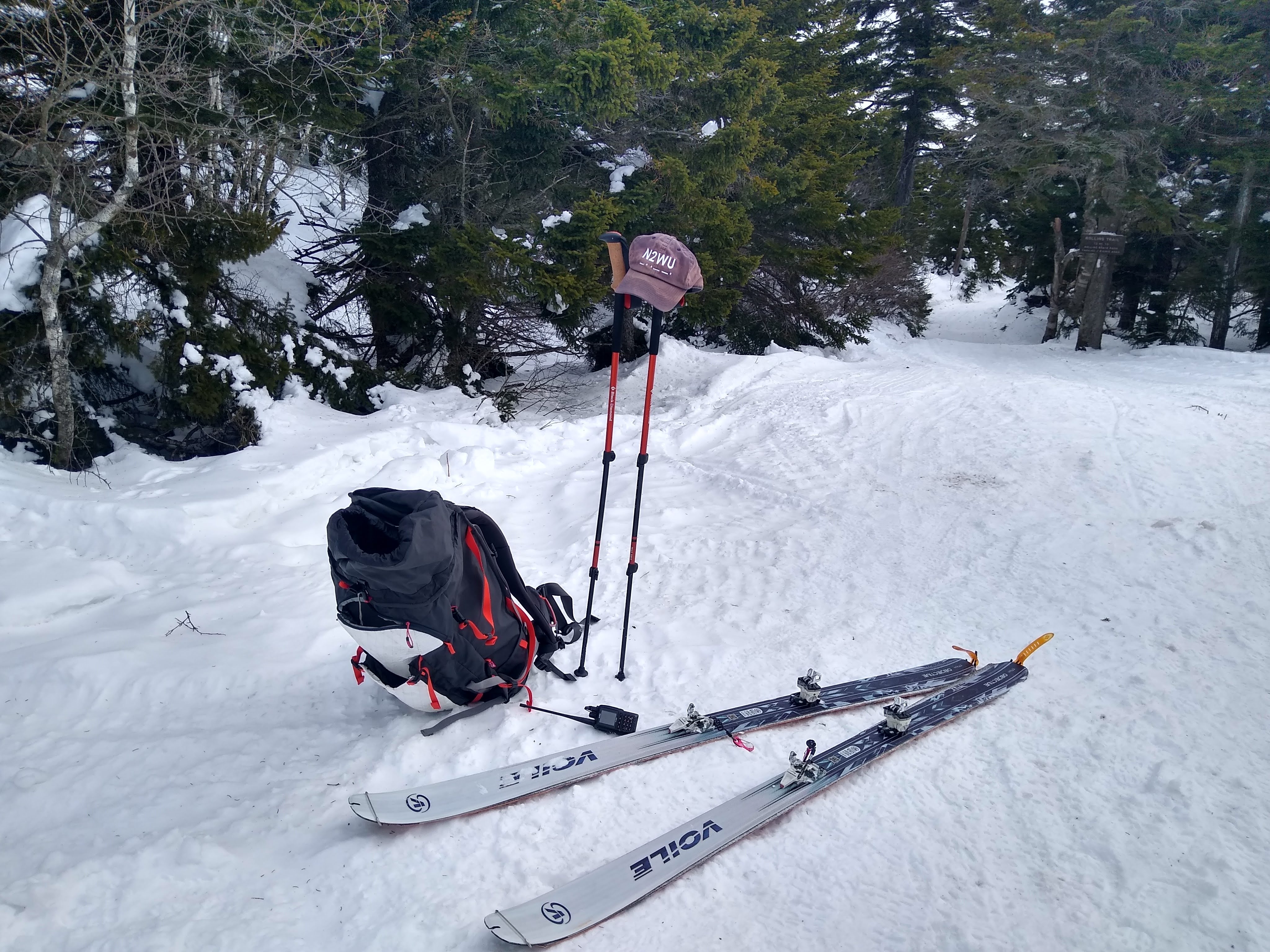
Backcountry is a field best learned with a friend. Don’t take my advice over the internet on how to get started - find a local group or training course to get your feet wet (icy?).
Of course, there’s nothing wrong with hiking and carrying ski boots/resort skis. Everyone starts somewhere.
Odds/Ends/Conclusions
In other news, ham and school research continues to pick up. I’m still throwing around my idea of a Wiener-Filter Weather Balloon Prediction Model and have some interesting nascent ideas in the field of signal processing and estimation/detection theory. As always this website remains my scratchpad, my portfolio, and my time capsule for a fun catalogue of deep radio dives.
-N2WU